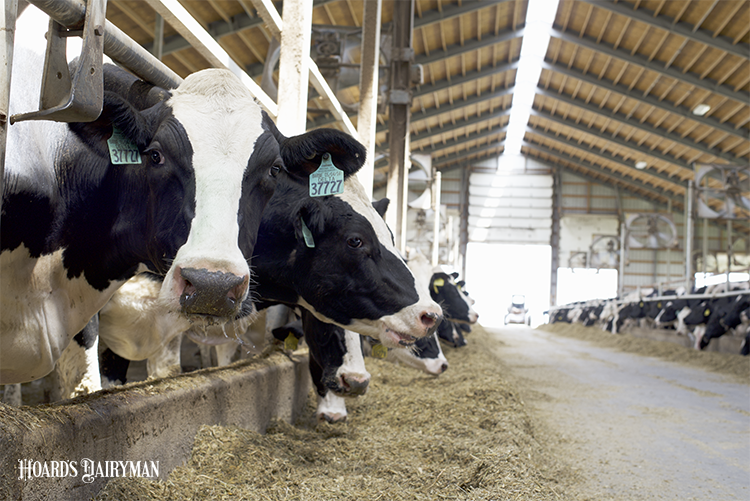
Many factors contribute to positive results when managing cows in an automated milking system. One of the most important periods to focus on, though, may take place before cows even step foot in the automated barn.
During an I-29 Moo University webinar, dairy educator Jim Salfer from University of Minnesota Extension shared a commonality of the robotic dairies he works with that achieve high milk production.
“These farms all have a really good precalving diet,” Salfer said, emphasizing the importance of overall feed management in a robotic milking system.
A well-formulated transition cow diet is valuable because it promotes feed intake after calving, which in turn leads to healthier fresh cows. Salfer said healthy fresh cows make more early lactation visits to the robot, and that drives milk production. Greater milk production stimulates more feed intake, which sets the cow up for more milk production, and the circle continues.
Of course, healthy cows are important in a conventional system as well, but Salfer reminded that those cows will be milked two or three times a day, even if they don’t feel well, because we milk them. A robotic system relies on a cow’s ability and desire to come to the robot to be milked.
“It’s more important to have healthy, aggressive cows in a robot dairy because that is what makes this whole circle work,” he said.
Ideally, Salfer said a transition cow pen should include 30 inches of bunk space per cow. He also recommended that stocking density does not exceed 80% to 90%.
Once cows enter the milking herd, Salfer made a few notes about the partial mixed ration (PMR). He said that good quality forage is a must for the PMR, as it allows a farm to feed higher levels of energy without elevating starch content.
He also said to monitor forage moisture and particle size of the ration. “If the ration is not consistent, we start losing visits to the robot,” he said. “For this reason, I believe bunk management and feeding management is more important in a robotic dairy.”
The ultimate goals for robotic milking are frequent visits to the robot, high milk production, high feed intake, and healthy cows. A lot of these targets are established in early lactation, and the transition period is really where it all begins.








